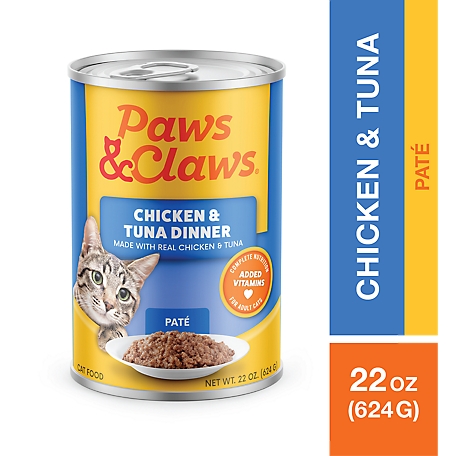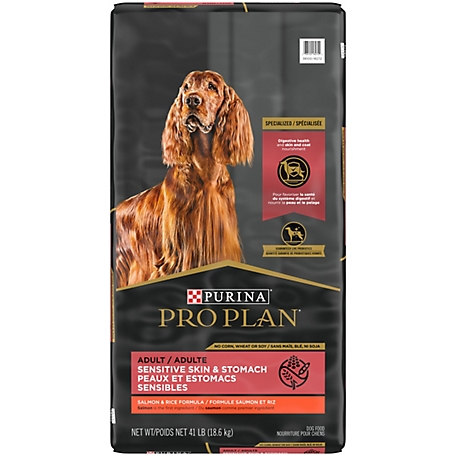Paws & Claws Adult/Kitten Complete Nutrition Chicken and Tuna Pate Wet Cat Food, 22 oz.
Great for cats of any age, the Paws & Claws Adult/Kitten Complete Nutrition Chicken and Tuna Pate Wet Cat Food is designed to give your cat a complete, balanced and nutritional diet. The wet cat food is made with real chicken and tuna flavoring, and it contains added vitamins and taurine to aid in a healthy heart and eyes. The sealed can packaging and pate texture makes this cat food fresh and palatable for your cat to enjoy.
Great for cats of any age, the Paws & Claws Adult/Kitten Complete Nutrition Chicken and Tuna Pate Wet Cat Food is designed to give your cat a complete, balanced and nutritional diet. The wet cat food is made with real chicken and tuna flavoring, and it contains added vitamins and taurine to aid in a healthy heart and eyes. The sealed can packaging and pate texture makes this cat food fresh and palatable for your cat to enjoy.
- Ideal wet cat food for cats of all life stages
- Made with real chicken and tuna for flavor
- Designed to provide complete nutrition for your cat
- Contains added vitamins for nutrition
- Taurine for a healthy heart and bright eyes
- Chicken and tuna flavor makes this food delicious
- Pate cat food texture is attractive and palatable
- Sealed can packaging keeps food fresher for loner
- Made in the USA
- Cat food comes in a 22 oz. can
- Formulated to meet the nutritional levels established by the AAFCO Cat Food Nutrient Profiles for maintenance
Additional information
| Country of Origin | Made in USA |
|---|---|
| Breed Size | Extra Small, Small, Medium, Large, Extra Large |
| Flavor | Chicken and Tuna |
| Health Features | Heart Health, Vision Health |
| Life Stage | All Life Stages |
| Packaged Height | 5.03 in. |
| Packaged Length | 3.44 in. |
| Packaged Weight | 1.563 lb. |
| Packaged Width | 3.44 in. |
| Primary Flavor | Chicken, Tuna |
| Special Diets | With Grain |
| Texture | Pate |
| Wet Food Package Weight | 22 oz |
| Manufacturer Part Number | GPNCUC2212CHKTN |












by Terry
great food my cats love
by Dee
I use this to mix with Paws & Claws dry kibble and water, to make dinner for ‘community cats’. They love it and it helps me save money. Win/win.
by Barbara
My cats love this!
by Theresa
Was getting small cans for 5 cats. Major brand delivered to my house for convenience but they weren’t thrilled with it so I tried a few cans of this and they absolutely love it. These cans are around 4 small cans so I have less garbage as well. Now I have this delivered to the house!
by Jennifer
Excellent texture. My kitties’ GI systems seem to handle it well. Great price, too!